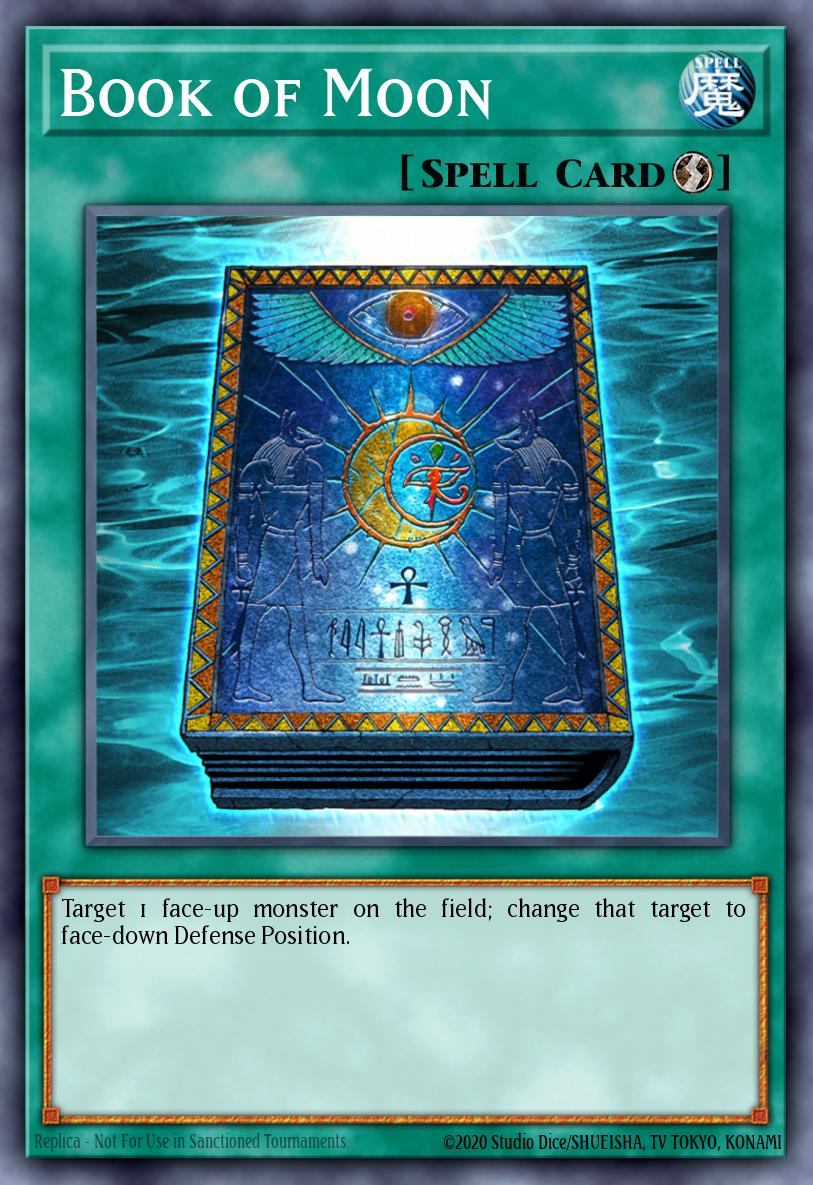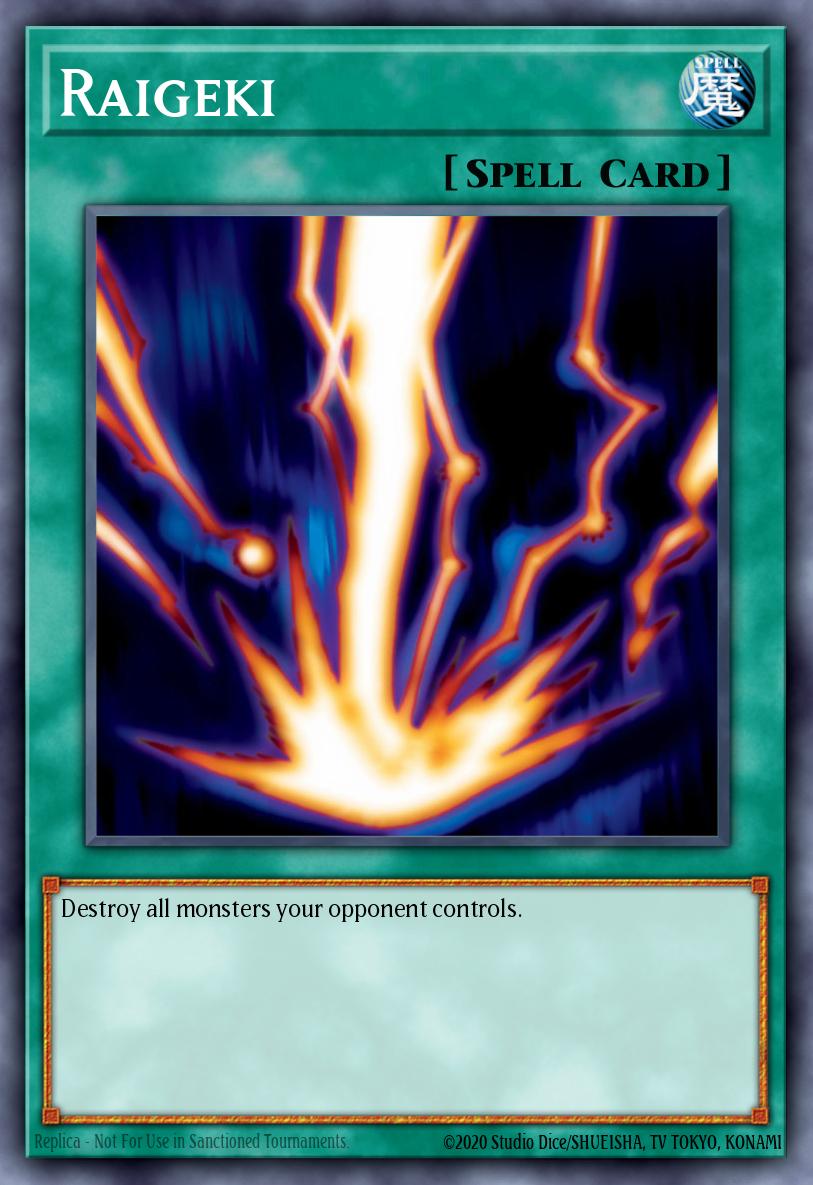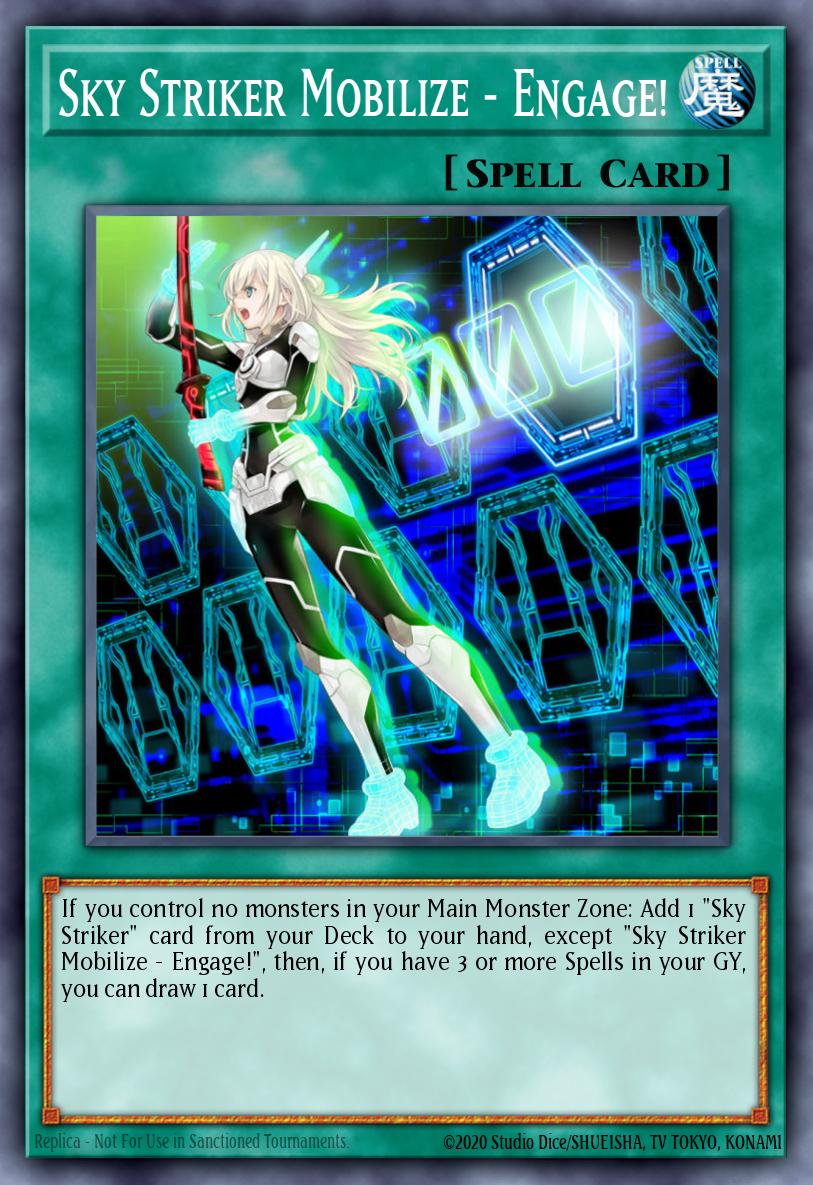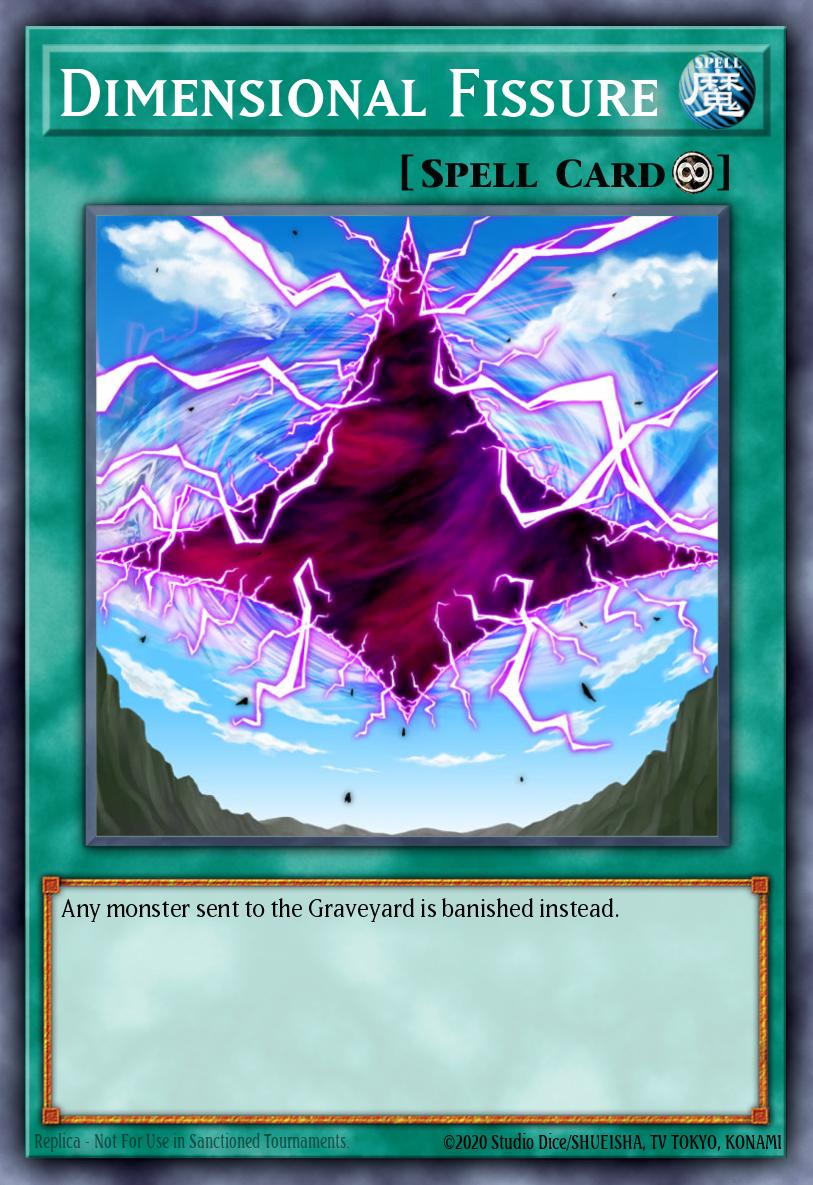$50 Yu-Gi-Oh! - Generic Spell Toolbox
“$50 YGO” is a series of articles that aim to help players compete in and enjoy Yu-Gi-Oh! on a budget. Within it, readers will find advanced deckbuilding theory, as well as heavily tested techs, to give each showcased build an edge without breaking the bank. As the title implies, the card selection of each build will be limited to a total of 50 dollars US, with prices taken from TCGPlayer. Although US dollars will be the benchmark, prices in Euros and other currencies shouldn’t stray too far away from the final tally, making these an excellent guide to buying decks on the cheap across the globe.
This article is dedicated to easily affordable generic spells. Just like in the last article, the selection will mostly be limited to cards under $2, but there will be some honourable mentions for those with larger budgets.
That's the introduction done. Let's get to the exciting part!
I've decided to split my selection into four sections - Interruptions, Board Breakers, Consistency Cards and Engines and finally, Floodgates. These should be self-explanatory, but interruptions cover cards that can interact with my opponent on their turn, ideally disrupting key plays. Consistency cards help either by adding draw power or searching specific things, Floodgates are cards that prevent certain actions from being able to take place, such as cards going to the graveyard, or certain monsters being summoned.
Table of Contents
Interruptions

Spells that can interrupt the opponent are important, especially on a budget. These usually come in the form of Quick-Spells and tend to be more impactful than hand traps, though not quite as much as traps, trading some power or having bigger downsides, in return for the ability to be used both on one's own first turn and following turns.
One of the best Quick-Spells in the current DUNE format is without a doubt Book of Moon. This card has truly withstood the test of time, rising to relevance again and again. Its best usage is against Kashtira, Purrely and Dragon Link, but it's quite solid against many other decks. Going first it can deny Kashtira the ability to set up their monsters, by causing them to become stuck with a set monster, which prevents them from special summoning more Kashtira monsters via their own effects. It also stops Kashtiratheosis from being used, unless they have access to Birth in order to normal summon another Kashtira monster. Going second, it can be used to flip Kashtira Arise-Heart face down in order to play uninhibited by its effect, which causes all cards that would go to the GY to get banished instead.
As mentioned, against Purrely and link-based decks such as Dragon Link, the card is also quite solid. Going first, it can be used to either deny the second effect of Purrely, or Purrelyly. Setting these stops the XYZ summon from happening and removes access to the monster for the rest of the turn. Similarly, against link-based decks, setting a monster prevents it from becoming link material. Going second, it is used in response to Purrelyeap!? Just like with Purrely and Purrelyly, this stops the XYZ summon and the trap will resolve without effect. Since Purrely took a consistency hit with the limiting of Purrely Delicious Memory, this means that a lot of the time, Book of Moon (and by extension, Book of Eclipse) will deny your opponent access to Expurrely Noir. Speaking of Book of Eclipse, this card has its own advantages and disadvantages compared to Book of Moon. For one, it can fall victim to Ash Blossom & Joyous Spring. In return, however, it can potentially turn your opponent's entire board face-down. Many of its best uses overlap with that of Book of Moon, so some opt to play it instead, or in addition to the other.
There are a few other cards to mention here. Forbidden Chalice is another card that goes in and out of formats. It has upsides to its usage even over Infinite Impermanence, as going second into boards, you can chain it to the activation of a card even if you already have a card on the field. This means you can, for example, bait, or otherwise force your Spright opponent to tribute a monster for the cost of Spright Red or Spright Carrot. Another example is getting rid of Baronne's negate by forcing them to use it, rather than having to pre-emptively use Impermanence, which your opponent will likely choose not to respond to in order to preserve the negate, just in case Baronne manages to live through the turn. The 400 ATK boost can and will come up on some occasions to attack over a bigger monster or protect one of your own from battle, while also getting to destroy the opponent's monster. Be careful with this card, as in some decks with low ATK/DEF monsters, boosting the ATK of your opponent's monsters will mean they can beat over your board more easily.
Super Polymerization is a power card that can exert immense pressure on your opponent. Although it has a heavy cost in the form of a discard, the ability to fuse away two of your opponent's monsters without the chance for a response is incredibly powerful. Note that despite having to discard a card for its cost, Super Poly is not a card that makes you go minus in most situations, unless you are using it to fuse with one of your own monsters in a pinch. You generally get rid of two monsters on the field in return for two using up two cards - Super Poly itself, and the card you discarded, and then you get a monster on the field, which means that you've actually gone +1 in card advantage. The main thing holding this card back is that you need to have flex spots in your Extra Deck for monsters you can summon. In the DUNE format, the best SPoly targets are Garura, Wings of Resonant Life, Mudragon of the Swamp and Dragon Knight Draco-Equiste. Unfortunately, Garura is quite expensive at the moment and so will not be considered for the $50 builds. Still, Mudragon and Draco-Equiste are quite solid, with Mudragon hitting a variety of decks even during their first turn (if they're going second), while Draco-Equiste is a way to out the Synchro heavy boards of Mannadium and Synchron, specifically by fusing away Baronne and any Dragon Synchro monster. Other options include World Chalice Guardragon Almarduke, for link heavy decks such as Runick variants, Starving Venom Fusion Dragon for DARK decks, and Predaplant Dragostapelia for decks that fusion summon a lot, such as Branded or Tearlament.
Cosmic Cyclone is another card that most players can benefit from playing. The current format is very focused on the ability to grind, and many decks, even some of the best, such as Kashtira, rely heavily on Spells and Traps both to search out key pieces of their deck, as well as to stay in the game. Other decks rely heavily on traps to be their main form of disruption, such as control decks like Labrynth, or many mid-range decks such as Mathmech. Most people opt to side deck it, but there are arguments to main deck it, if you have the space and your engine, is strong enough that running some extra generics won't hurt.
There are also some less used Quick-Spells that have cropped up over the years even in competitive play, such as Offerings to the Doomed. Offerings is an interesting card in that it acts similarly to Book of Moon, but has a destruction effect instead. If your deck struggles to get rid of big monsters on the field, even when they're face-down, Offerings could potentially be a solution, despite its drawbacks in the form of skipping the next Draw Phase. One thing to keep in mind is that if you use two copies before your next draw phase, you still only skip one. The drawback is very real and impactful, but you can mitigate it in some decks. For example, Sky Striker draws and searches a lot during its turn anyway, so losing one random card in return for getting rid of a problematic monster on your first turn isn't necessarily a bad trade.
Board Breakers

Board Breakers are a colloquial category of Spells that are immensely useful for going second and as their title implies, breaking through an opponent's board. Even on a budget, there are several excellent options here.
To start things off, I'll go over cards known as 'board wipes'. These are cards that will, if they manage to resolve, get rid of the entirety of your opponent's board. Though these aren't just Spells, the ones relevant to this article are Raigeki, Dark Hole, Interrupted Kaiju Slumber for monsters, and Harpie's Feather Duster for Spells and Traps. Raigeki and Dark Hole are mostly self-explanatory cards. Their effects present an immediate threat to any board that relies on its monsters. They were both quite popular after the June 5th banlist, but pre-DUNE. The meta revolved heavily around board breakers during that time. This popularity has waned with the addition of DUNE into the TCG card pool. It gave Purrely more consistent access to Expurrely Noir , which is completely immune to these cards, and enabled Mannadium combos that can summon Hot Red Dragon Archfiend King Calamity, which prevents these cards from being activated. Even without those specific combos, if Mannadium opts to build a proper board instead, much like Synchron, they generally set up two omni negates, cards that can negate monsters, spells, and traps, among other things. There are a lot more factors, but in the current meta, the most valuable board breakers seem to be cards that cannot be responded to.
In that regard, since I made a small oversight in not mentioning Kaiju in the previous article, do take note that Kaiju are quite popular at the moment for dealing with both Noir and Kashtira Arise-Heart. Interrupted Kaiju Slumber requires you to play some Kaiju in order to meet its activation requirement, but in many cases, just running two or three Kaiju alongside Raigeki and/or Dark Hole can be better. Slumber, much like Book of Eclipse, can be Ash'd, but if you play a deck that is heavily impacted by the hand trap, this might be a good thing, as you can bait Ash with Slumber, if the rest of your hand allows you to still both break the opponent's board and execute your strategy. Don't underestimate Slumber, as unlike the other board wipes, it actually gives you back a monster and also allows you to search Kaiju on following turns, meaning that even if it fails to get rid of the opponent's board, it still trades positively into hand traps, which are becoming more popular again.
An alternative to Kaiju also exists in Spell form. Herald of the Abyss is also a solid out to many untargeteable, indestructible, or unaffected monsters, provided they are either on their lonesome, or have a different Attribute or Type from the rest of the board, something that is certainly true for Arise-Heart, being a DARK Machine as opposed to a Psychic monster like the rest of the Kashtira archetype, and most of the time, for Noir too. If you're not on a budget, Herald of the Abyss also has the upside of being able to be searched via Triple Tactics Thrust. Since that card is disgustingly expensive, I won't talk about it further. Playing Herald of the Abyss can be better than using Kaiju because it doesn't trigger My Friend Purrely, which means that not only do they lose their big 'towers' monsters, but they also lose out on a lot of grind. Granted, if you had no response to the activation of their Purrely Xyz monster with Purrely Sleepy Memory attached in the Standby, they will still be drawing a lot of cards, but that's where cards like Forbidden Chalice can shine. The ideal line of play if you have both, would probably be to use Chalice (or a similar card) pre-emptively in the Draw Phase to force out Purrelyeap!? then they only draw half the cards they originally would have in the Standby Phase. If you use Chalice on the activation of the Xyz monster, they still get an extra draw, since that monster becomes an Xyz material and therefore won't be negated.
I mentioned cards that cannot be responded to earlier. One example of these that is very useful even on a budget is Dark Ruler No More. This card, while stopping you from OTKing your opponent (or doing any damage at all), will often let you muscle your way through their board, provided they don't have a negate for Spells ready, as only monsters cannot respond to it. DRNM can often be more efficient than something like Raigeki if your engine is strong enough that a few big vanillas can be gotten rid of easily enough, without hampering your ability to grind afterwards too much.
Honourable Mentions
Lightning Storm is a card that will be out of many people's budgets but is nonetheless a powerful card that helps with breaking both monster and Spell/Trap based boards. It's not good into every monster based board, as it can be played around by placing monsters in defense position, but if your opponent is on a lot of Link monsters, or relies heavily on monsters that are Normal Summoned, Lightning Storm can be quite devastating. Versus Spell and Trap based decks it's just as strong as Duster.
Consistency Cards and Engines

This section covers cards that give you extra draw power, or get you to cards in your main engine, other engines, or standalone generic cards.
In terms of standalone generics, there is the Pot series of cards. On a budget, the most commonly used ones of these are Pot of Desires, Pot of Extravagance, and Pot of Duality. Two of these have a large impact on your deckbuilding. Desires has the potential to banish cards you might need, so playing it in decks with a lot of combo pieces is not advised. If your deck runs a lot of 3-ofs, it's generally unlikely that you will go through all three copies of one card in one game, so running a card like Desires can be an excellent free boost to your consistency. Extravagance works very similarly but concerns the Extra Deck. Many opt to mitigate its ability to hurt your own plays by playing two or three copies of cards that are at least semi-important to the strategy. However, if a deck really doesn't rely on its Extra Deck, one can consider playing a normal ED of 15 utility cards and simply using the utility that is left after multiple cards have been banished. I think both focusing on a small number of utility cards or deciding to stay flexible are valid approaches. Duality is the type of card that you only run if your deck already is geared towards ignoring its restriction of not letting you special summon. This ends up being mostly control or stun decks.
The engine that springs to most people's mind immediately when discussing budget spells is the Sky Striker engine. It consists roughly of 2 Sky Striker Mobilize - Engage!, 1 Sky Striker Mecha - Hornet Drones, 1-3 Sky Striker Mecha - Widow Anchor, 0-3 Sky Striker Mecha - Shark Cannon and 0-1 Sky Striker Maneuver - Afterburners! Some decks that don't need their Normal Summon, or don't rely on it heavily, may opt to play 1-3 copies of Sky Striker Ace - Raye. If you're feeling cheeky, you could even play one copy of Sky Striker Mecha - Eagle Booster. I do think that although most people discount it, both of Eagle Booster's applications in terms of acting as a pseudo Called by the Grave in letting you play through disruption, and also protecting cards from destruction, can be very useful. Some of these cards could even be played without Engage, but of course, are much better when searched off the card. They are some of the most efficient Spells in the game of Yu-Gi-Oh, having effects that allow them to both break boards going second, while also helping you build your own board if you have 3 Spells in the GY already.
Engage shouldn't need any introduction, being able to draw a card while also searching for further cards is very strong. In the current meta, Shark Cannon is still solid, but I wouldn't play more than 2, as this can be a little bricky in match ups where it's less impactful. Widow Anchor with its ability to both negate and take control of monsters is the strongest tool in the engine. The engine synergizes the most with decks that want to link climb into single boss monsters such as Topologic Bomber Dragon, Unchained Abomination, or Apollousa, Bow of the Goddess. There is also a lot of synergy with cards such as I:P Masquerena.
Another engine that focuses on Spells is the Spellbook engine. An old fan-favourite, this engine can still be useful in modern play, especially if your deck doesn't need to Normal Summon a specific monster. The main pieces of the engine are Spellbook of Secrets and Spellbook of Knowledge, as well as Spellbook Magician of Prophecy. If your deck plays other Spellcasters one can even consider playing Spellbook of Fate. In testing, the engine for me usually amounts to 0-3 Magician, 2-3 Secrets, and 2-3 Knowledge, with the specific ratios mostly depending on how many other Spellcasters I'm running. Funnily enough, this engine synergizes well with the Sky Striker engine above. Knowledge sending Secrets, or Secrets adding Knowledge, then Knowledge sending a Spellcaster both give you 2 Spells in the grave while also letting you see 2 more cards off the top of your deck.
An unlikely engine that you can consider if 1. Your deck runs some level 7 monsters, 2. Your deck runs Tuners, or 3. Your deck link climbs a lot and can use two free bodies, is a small Kashtira engine consisting of the two Kashtira Unicorn that you're allowed to play and 1-3 Kashtira Birth. This engine (with the addition of Kashtira Fenrir ) has seen success in decks like Kashtira Speedroid. Not only does Birth allow you to normal summon your Level 7 monsters, but it also revives Unicorn for free if you use it for other plays.
Another small engine to think about is Chaos Space accompanied by Black Dragon Collapserpent and White Dragon Wyverburster. This engine provides access to one of the best Link 2 monsters in the game, Hieratic Seal of the Heavenly Spheres, though you do need to play the one Striker Dragon too. If you're going second, it can easily be sided out, or kept in to use the bodies for link climbing or to force out disruptions. This engine works especially well if you're playing other Dragon monsters, such as Bystial Baldrake.
Floodgates

Spells that stop interactions from happening entirely are rare, but they do exist, and some of them can be quite powerful.
Dimensional Fissure is one of them. This card causes all monsters that would hit the GY to get banished instead, a powerful option to play if your deck relies more heavily on Spells and Traps with GY effects and doesn't mind banishing its monsters or can recur them despite being banished.
Secret Village of the Spellcasters is a more restrictive card with an accompanying powerful effect. By simply putting and keeping a Spellcaster monster on the field while your opponent controls none, you can prevent them from activating Spell Cards entirely. Note that it doesn't stop the effects of Spells already on the field, or that trigger in the GY.
Deck Lockdown is another powerful Spell. Although it won't last forever, even if your opponent doesn't remove it from the field, the time that it buys you can be vital to winning the game. I encourage you to look at it less as a floodgate that removes itself, and more as essentially a lingering floodgate in the vein of cards like Droll & Lock Bird that lasts for three turns. Sure, it can be outed via cards like Cosmic Cyclone, but in return, it's essentially two floodgate effects in one card. If your deck doesn't add to the hand via effects other than drawing cards much and doesn't need to special summon from the main deck, this could be a card to try. A notable interaction with this card is that cards like Dingirsu, the Orcust of the Evening Star can extend its duration by preventing it from destroying itself.
Speaking of lingering floodgates, another card of this type is Heat Wave. A very powerful card, but one that only works when going first. I recommend siding this specifically for going first in game 2 or game 3 if your deck can accommodate it. Heat Wave is a controversial card, as many deride it for its restrictions, but I feel that if you treat it the same way that you would Dimensional Barrier, Different Dimension Ground, or even Harpie's Feather Storm, it becomes a lot more viable. It does conflict with Pot of Extravagance as decks that make use of Heat Wave can often make good use of the Pot, so whether you prefer to run other cards to stop your opponent while also retaining the ability to receive a +1 via drawing two cards is something you'll have to think about.
Lastly, there's Zombie World, an old card that has nonetheless managed to retain some relevancy. A good number of decks heavily rely on the Type of its monsters for synergistic effects and combos. These include Rikka, Floowandereeze, and Dragon Link. In the current overall meta, those aren't considered the decks to beat, but depending on your local meta, you might want to give it a shot.
That's it for the generic Spells, folks. If you have any personal suggestions for any of these categories and would like to let the world know about them, feel free to leave them in the comments below! The next article will go over Traps and then we can start theorycrafting decks!




